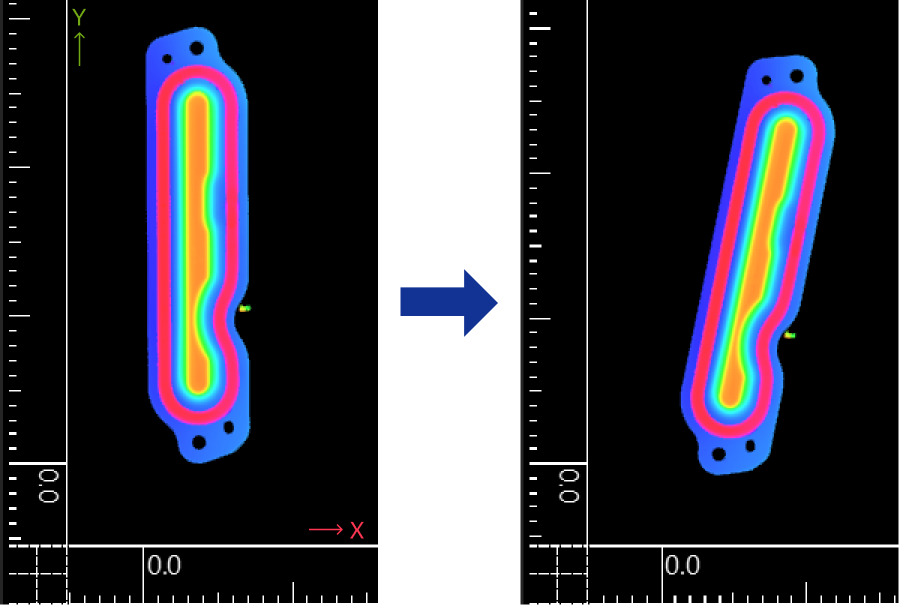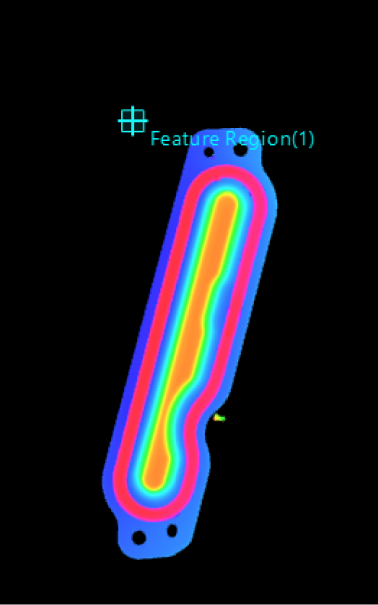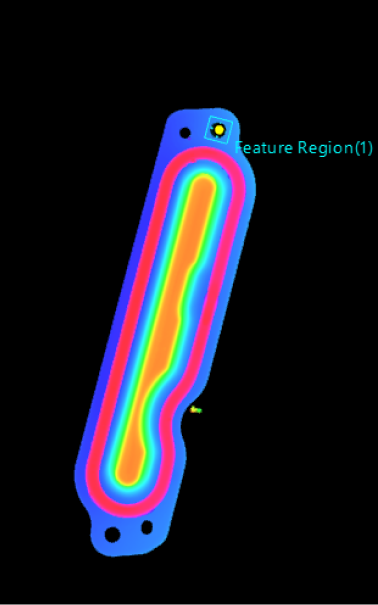Alignment Parameter Group
This section introduces how to use the “Alignment Parameter Group.”
Usage Scenario
It is hard to ensure the target object is in the same position in every acquired image. You may encounter the following:
-
Object translation: The target object moves along the X-axis or Y-axis.
-
Object rotation: The target object rotates about the Z-axis.
To ensure the consistency of subsequent measurements, you can use the following two methods to cope with the above situations:
-
Aligning images
The Alignment Step is designed to resolve the issue of image misalignment. You can create a matching model by extracting typical features of the target object and use it to adjust the object’s position. Regardless of how the object’s position changes, the object remains in the same position after alignment, ensuring the subsequent measurements will not be affected.
-
Transforming feature regions
In typical scenarios, feature regions do not automatically adjust with the position of the target object. If the object moves, you would need to adjust the feature regions manually, which is both repetitive and cumbersome. To address this, you can extract the information about the object’s translation and rotation on the XOY plane and translate and rotate the feature region accordingly to ensure it always covers the target area accurately, unaffected by the object’s position change.
The data collection of the object’s position changes on the XOY plane is the Alignment Parameter Group. Simply put, the Alignment Parameter Group ensures that when the target object’s position changes, the feature region adjusts accordingly, maintaining consistent measurements.
|
How to Obtain the Alignment Parameter Group?
Currently, you can obtain the alignment parameter group by the following methods:
Use the “Extract Alignment Parameter Group” Step
You can use the Extract Alignment Parameter Group Step to directly create an Alignment Parameter Group.
| The purpose of extracting the alignment parameter group is to ensure that the set feature region(s) can be automatically adjusted as the object’s position changes. Therefore, when creating an alignment parameter group, you should make sure that the parameters used are capable of accurately transforming the position of feature regions. |
- Example
-
After extracting the surface data of pin tips, you can create an Alignment Parameter Group on the basis of the center points of each pin tip to further narrow down the data range. Then, when using the Process Surface by Filter Step to crop the extracted surface data, set a feature region for the surface data of one pin tip to establish the correspondence between the feature region and the center point. The feature regions for other pin tips will then be automatically adjusted accordingly.
When the position of pins changes, the feature regions can be automatically adjusted according to the correspondence established during the initial tuning process if the center points of pin tips are determined.
① Extract surface data of pin tips
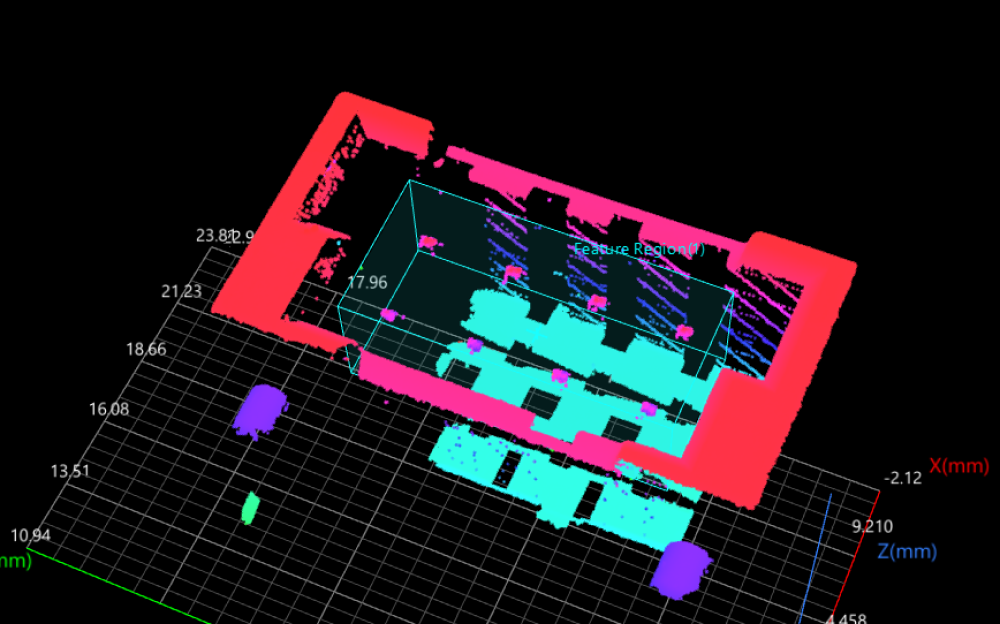
② Obtain center points of pin tip data
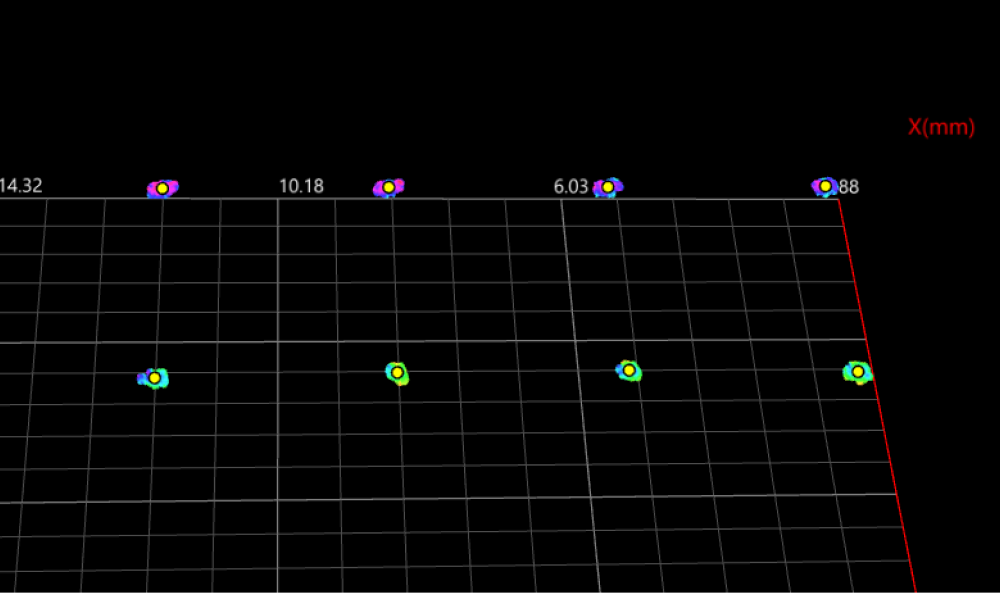
③ Create an alignment parameter group
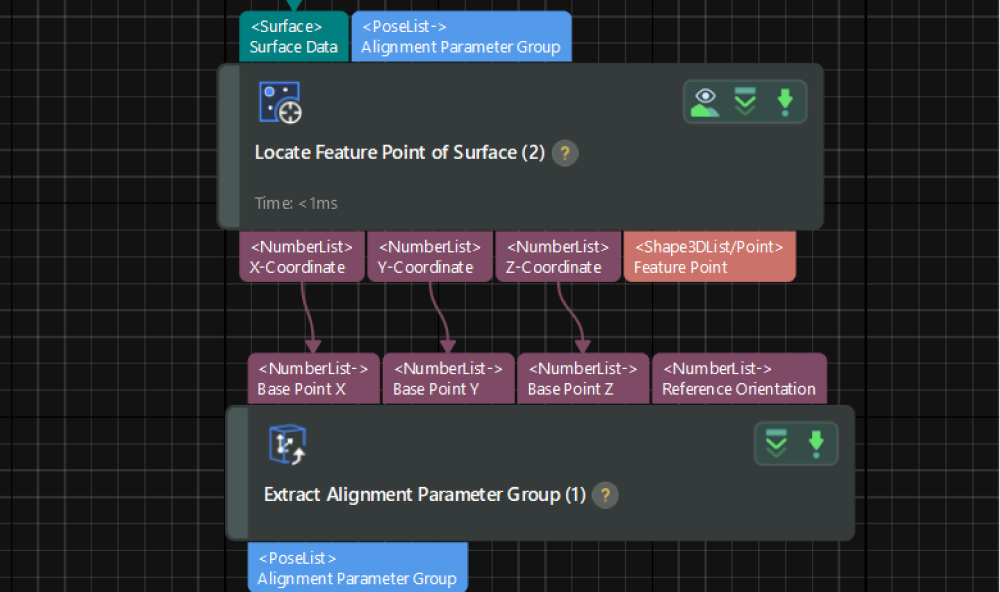
④ Adjust a feature region
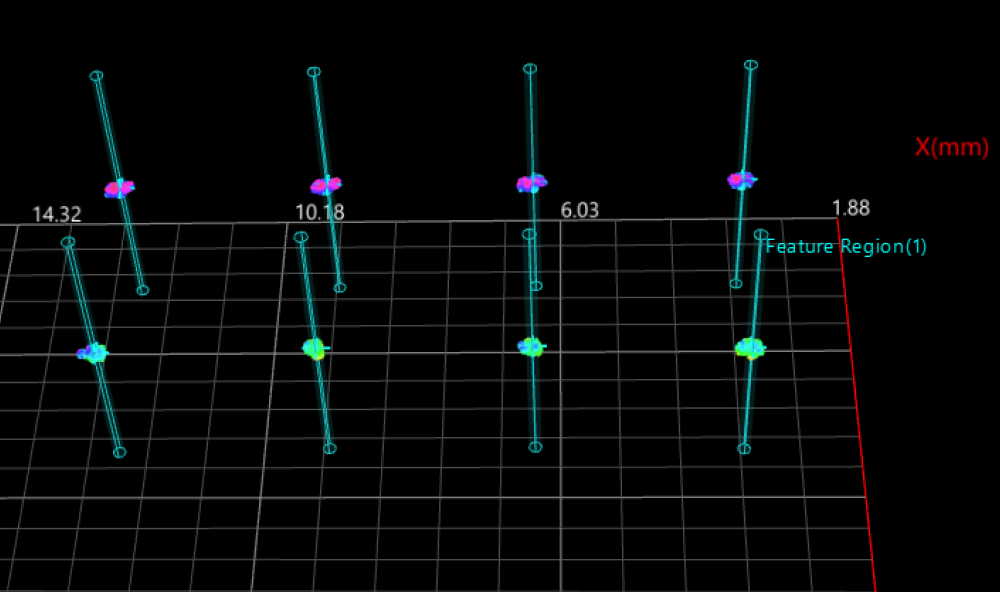
⑤ Narrow down the data range

Use the “Alignment” Step
The Alignment Step can output an Alignment Parameter Group.
The “Alignment” Step can calculate the translation and rotation of target objects on the basis of the generated matching model to output an Alignment Parameter Group that includes the translation and rotation data. The parameter group can be input into other Steps that use feature regions to translate and rotate feature regions accordingly.
| The surface data output from the Alignment Step is aligned data, where target objects are always in the same position. If you input both the aligned surface data and the alignment parameter group into another Step, the alignment parameter group will not make a difference. |
- Example
-
When the target object’s position changes in the image, use the alignment parameter group to change the feature region together:
Change Illustration Alignment parameter group not used Alignment parameter group used Translation
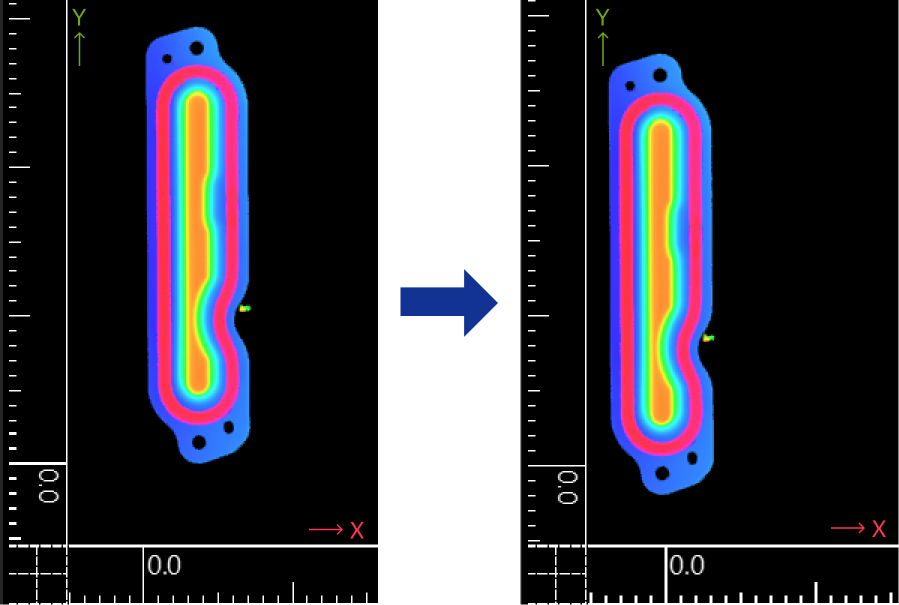
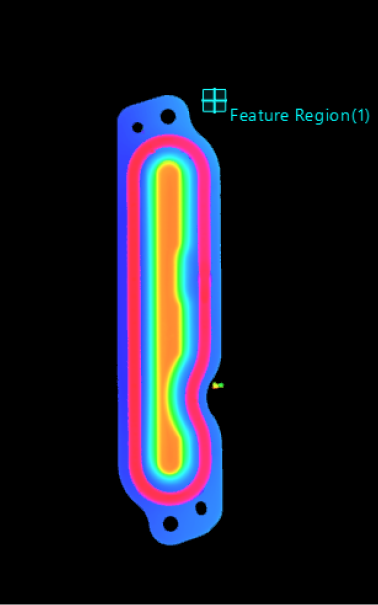
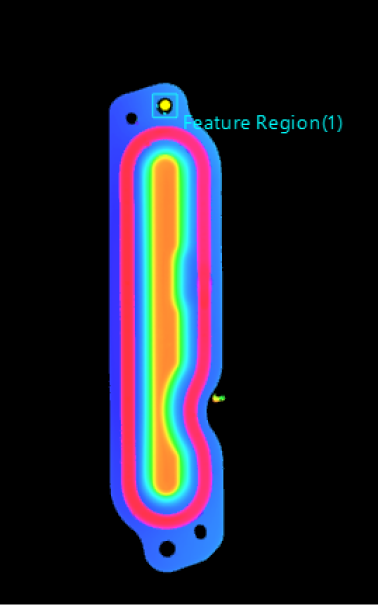
Rotation
